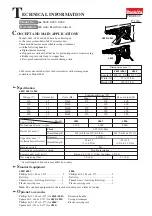
Important Notes
R&S
®
NGL200
12
User Manual 1178.8736.02 ─ 02.01
~72 °C, a channel-specific overheat protection intervenes. Affected outputs will auto-
matically be switched off.
Air circulation
Do not obstruct the ventilation holes!
3.3
Measurement Categories
This instrument is designed for supplying power on circuits that are only indirectly con-
nected to the low voltage mains or not connected at all. The instrument is not intended
for measurements within the measurement categories II, III or IV; the maximum poten-
tial against earth generated by the user must not exceed 250 V peak in this application.
The following information refers solely to user safety. Other aspects, such as the maxi-
mum voltage, are described in the technical data and must also be observed.
The measurement categories refer to transients that are superimposed on the mains
voltage. Transients are short, very fast (steep) current and voltage variations which
may occur periodically and non-periodically. The level of potential transients increases
as the distance to the source of the low voltage installation decreases.
●
Measurement CAT IV: Measurements at the source of the low voltage installations
(e.g. meters)
●
Measurement CAT III: Measurements in building installations (e.g. power distribu-
tion installations, power switches, firmly installed sockets, firmly installed engines
etc.)
●
Measurement CAT II: Measurements on circuits electronically directly connected to
the mains (e.g. household appliances, power tools, etc.)
●
0 (instruments without measured measurement category): Other circuits that are
not connected directly to the mains
3.4
Mains Voltage
The instrument applies 50 Hz / 60 Hz mains voltages ranging from 100 VAC, 115 VAC
or 230 VAC (tolerance
±
10 %). Mains voltage switching is not intended. The input line
fuse is accessible externally. Power socket and fuse holder form a single unit.
You need to first disconnect the power cord from the connector before you can safely
replace the fuse (as long as the fuse holder is undamaged). Next, the fuse holder must
be pried out using a screwdriver. The starting point is a slot next to the contacts. The
fuse can then be forced out of its mounting and must be replaced with an identical fuse
(see information about the fuse type on the rear panel). The fuse holder will be inserted
against the spring pressure until it locks into place. The use of mended fuses or short
Mains Voltage
















































